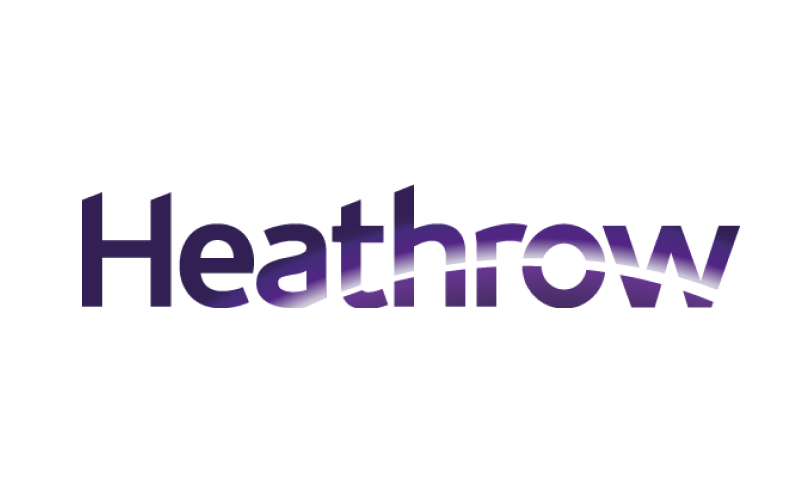
Microsoft Power BI is a business intelligence cloud service that has been developed and maintained by Microsoft. It is a collection of software services and applications that were initially based on Excel Power Query. Continual development in Power BI has led to it becoming a market leading data visualization tool with multiple additional features.
What is Microsoft Power BI?
Microsoft Power BI is an innovative solution that helps organizations use the power of data. It serves as a comprehensive platform that lets organizations gather, analyze, and derive valuable insights from their data sources.
With this service, organizations can turn unrelated data from various sources into immersive and coherent visually represented insights. While Power BI is relatively new in the industry, having been released in 2010, it has rapidly grown in popularity and looks set to continue growing.
With a culture of data-driven decision-making Power BI aids organizations to explore and interact with data in a self-service manner. It eliminates the traditional barriers between technical and non-technical organizations, enabling everyone within the organization to gain insights and make informed decisions based on data. This democratization of data empowers teams to collaborate and share their findings, fostering a more data-driven and transparent environment.
How does Power BI work?
Power BI relies on various building blocks that work together to enable its functionality and empower organizations to extract insights from their data. These building blocks encompass key components and concepts within Power BI that contribute to its overall operation.
Data sources:
One of the fundamental building blocks of Power BI is the ability to connect to diverse data sources. Power BI allows organizations to establish connections with various data repositories, including databases, cloud services, spreadsheets, and more. This connectivity ensures that organizations can access and integrate their data seamlessly within the Power BI environment.
Data transformation:
Power BI provides capabilities for data transformation, which is essential to prepare the data for analysis and visualization. Organizations can leverage Power Query, a powerful feature within Power BI, to shape, clean, and transform the data according to their requirements. This building block allows organizations to manipulate the data, merge multiple data sources, handle missing values, and perform calculations, ensuring data accuracy and consistency.
Data modeling:
Another crucial building block of Power BI is data modeling. This involves defining relationships between different data tables, creating calculated columns and measures, and establishing hierarchies to improve data analysis. Implementing a comprehensive data model means Power BI lets organizations explore their data effectively, perform calculations, and generate meaningful insights.
Visualizations:
Power BI’s visualizations serve as building blocks that help organizations represent data in a visual and interactive manner. The software offers a wide range of pre-built visual elements, including charts, graphs, maps, and tables, which organizations can customize to suit their needs. These visualizations allow for intuitive data exploration, trend analysis, and data-driven storytelling, making it easier for organizations to comprehend and communicate insights.
Dashboards and reports:
Power BI facilitates the creation of dashboards and reports as essential building blocks for presenting data and insights. organizations can assemble visualizations, along with additional textual context, into meaningful dashboards that provide a consolidated view of key metrics and performance indicators. Reports, on the other hand, offer a more detailed analysis of data, often incorporating multiple pages with interactive visuals and supporting narrative.
Sharing and collaboration:
Organizations can share their insights and collaborate with others through the sharing and collaboration building blocks. organizations can publish their dashboards and reports to the Power BI service, allowing authorized individuals to access and interact with the shared content. This building block promotes collaboration and facilitates discussions around the data, enhancing the collective understanding of insights and fostering a data-driven culture within organizations.
Combining and leveraging these building blocks means Power BI betters organizations ability to unlock the value of their data. The software simplifies the process of connecting to data sources, transforming and modeling data, creating compelling visualizations, and sharing insights. Power BI’s modular approach, supported by these building blocks, enables organizations to navigate the data analytics journey seamlessly, regardless of their technical expertise.
How Power BI helps organizations
Power BI operates as a versatile data platform where organizations can gain valuable insights from their data, regardless of their technical expertise. Fundamentally, Power BI works by enabling organizations to connect to various data sources, such as databases, cloud services, and spreadsheets, to bring all the data together in one place. This consolidation allows for a comprehensive view of the organization’s data, which is a fundamental step towards deriving meaningful insights.
Once the data sources are connected, Power BI employs a process called data transformation to shape and clean the data, ensuring its accuracy and reliability. This step includes activities like removing duplicates, handling missing values, and performing calculations to create new derived columns. Power BI provides an intuitive and user-friendly interface, often utilizing a drag-and-drop approach, to empower organizations with different technical backgrounds to carry out these transformations without the need for complex coding.
“Power BI is a versatile data platform where organizations can gain valuable insights from their data, regardless of their technical expertise.”
Next, Power BI facilitates the creation of interactive visuals and reports to present the data in a visually compelling and understandable manner. organizations can choose from a wide range of pre-built visualizations, such as charts, graphs, and maps, or they can create their own customized visuals. These visuals can be interactive, allowing organizations to explore the data further by filtering, drilling down, or applying slicers to focus on specific aspects of interest. By providing a user-friendly interface for visual creation, Power BI enables organizations to communicate insights effectively, even to non-technical stakeholders.
PlA feature called “Power Query,” simplifies the process of data extraction, transformation, and loading (ETL). With Power Query, organizations can easily transform and shape data from different sources, eliminating the need for complex coding or manual data manipulation. This allows time to focus on the analysis and interpretation of data rather than spending excessive time on data preparation.
“Microsoft Power BI is an innovative solution that helps organizations use the power of data.”
Power BI can also leverage advanced technologies such as AI and machine learning to improve data analysis capabilities. These technologies, working behind the scenes, provide intelligent insights and recommendations based on the data patterns, trends, and anomalies identified in the dataset. For example, Power BI can automatically detect outliers, identify key influencers, and even suggest potential correlations within the data. These AI-driven insights empower organizations to uncover hidden patterns and make data-driven decisions with confidence.
Through Power BI, organizations have access to countless components. There are a few essential components used by all organizations, such as: Power BI desktop, the desktop application for power BI; Online Saas, the Power BI online service; Mobile apps; Paginated Reports, Power BI’s report builder and Power BI Report Server, the on premises reporting function.
Unique features of Power BI
Data connectivity | Extensive data connectivity options are available so organizations can connect to a wide range of data sources, including cloud services, databases, files, and online services. This feature enables organizations to consolidate and analyze data from various sources within a single platform. |
Interactive visualizations | With a variety of interactive visualizations, such as charts, graphs, maps, and tables, Power BI helps organizations present and explore their data effectively. These visualizations allow for intuitive data exploration and analysis, facilitating deeper insights and understanding. |
Natural language querying | With its natural language querying capability, Power BI allows organizations to ask questions using everyday language to explore and analyze their data. This feature enables organizations to gain insights by simply typing questions and receiving relevant visualizations or responses based on their data. |
Collaboration and sharing | Power BI enables collaboration and sharing of data insights through its sharing and collaboration features. organizations can easily publish and share dashboards, reports, and datasets with other authorized organizations, fostering a collaborative environment for data-driven decision-making. |
Data transformation and modeling | Powerful data transformation and modeling capabilities, allow organizations to shape, clean, and transform their data for analysis. organizations can then define relationships between data tables, create calculated columns and measures, and establish hierarchies, enabling efficient data modeling and analysis. |
Power query | Power query, a feature within Power BI, simplifies the process of data extraction, transformation, and loading (ETL). It provides a user-friendly interface for data preparation tasks, allowing organizations to transform and shape data from various sources without requiring extensive coding knowledge. |
Mobile access | Power BI offers mobile applications for iOS and Android devices, providing organizations with the flexibility to access their data and insights on the go. The mobile app allows organizations to view, interact with, and share dashboards and reports from their mobile devices, ensuring access to data anytime, anywhere. |
Advanced analytics and AI integration | Power BI integrates advanced analytics and artificial intelligence (AI) capabilities, enabling organizations to perform advanced data analysis, detect patterns and anomalies, and leverage predictive modeling. These features improve data exploration and empower organizations to uncover valuable insights and trends within their data. |
Customization and extensibility | Power BI offers customization options, allowing organizations to personalize their dashboards, reports, and visualizations to align with their specific requirements and branding. Additionally, Power BI supports extensibility through the use of custom visuals and developer tools, providing opportunities for further customization and integration with other applications and services. |
Data security and compliance | Power BI prioritizes data security and compliance, providing robust security measures, encryption options, and compliance certifications. organizations can implement role-based access control, data classification, and encryption policies to ensure the confidentiality and integrity of their data. |
Why use Power BI?
Microsoft Power BI can be used by organizations of any size. It functions as a replacement for outdated systems such as Excel, providing a more flexible and user-friendly system for manipulating and visually representing data.
Organizations developing machine learning programmes and artificial intelligence are able to make use of Power BI due to its capacity to analyze and report on vast data sets along with the scalability available, ensuring continual growth is possible without hindrance.
Additional features such as the integration with Microsoft Cortana and further AI utilized to analyze data, along with the mobility attained through the cloud based nature, makes Power BI a strong option for businesses in any industry.
Advantages of Power BI for a competitive edge
Cloud-based architecture: | The cloud-based architecture offers the advantage of scalability and accessibility. Organizations can use the cloud to store, process, and analyze large volumes of data without the need for extensive infrastructure setup. |
Offline work with Power BI desktop: | Power BI desktop provides advanced authoring capabilities and offline access to data and reports. This allows organizations to work on their data analysis and report creation even without an active internet connection, providing flexibility and convenience. |
Natural language generation: | Natural language generation (NLG) capabilities lets organizations automatically generate written narratives and summaries based on their data insights. This improves communication of findings and facilitates easier understanding of data-driven stories. |
Quick insights: | The quick insights feature empowers organizations to gain valuable insights from their data with just a few clicks. By automatically analyzing data patterns and trends, quick insights provides organizations with instant, ready-to-use insights, saving time and effort in manual exploration and analysis. |
Real-time data streaming: | Real-time data streaming allows organizations to connect to live data sources and visualize streaming data in real-time, which is particularly beneficial in scenarios where up-to-the-minute insights and monitoring are critical, such as real-time business intelligence and IoT applications. |
Power automate integration: | Integration with Microsoft Power Automate means organizations can automate data-related tasks, notifications, and workflows. This simplifies data processing, alerting, and collaboration, increasing productivity and providing timely actions based on data events. |
Hybrid deployment options: | With hybrid deployment options organizations connect to and analyze data from both on-premises and cloud-based sources, catering to organizations with hybrid data environments, providing the flexibility to leverage the benefits of Power BI in diverse data landscapes. |
Developer-friendly environment: | The developer-friendly environment with comprehensive APIs and software development kits (SDKs), means developers can extend, customize, and integrate Power BI functionalities into their applications and solutions. |
Community support and learning resources: | The user community and an extensive collection of learning resources makes sure organizations have access to community forums, online tutorials, documentation, and training materials, fostering knowledge sharing, troubleshooting, and continuous learning. |
AppSource marketplace: | Power BI’s AppSource marketplace offers a wide range of pre-built applications, content packs, and custom visuals that extend Power BI’s functionality, thereby providing organizations with access to a vast ecosystem of ready-to-use solutions and visualizations, speeding up implementation and enhancing the overall Power BI experience. |
Who uses Power BI?

Heathrow airport, in the UK, to convert the data of their 80 million + daily passengers into visual reports and dashboards that can then be analyzed and managed by administration teams. Power BI also allows communication between teams to notify any relevant departments of increased traffic in certain areas, arising as a result of unforeseen circumstances, such as changes in the jetstream or storms which lead to the grounding of flights.

In the healthcare sector, organizations like Seattle Children’s Hospital and St. Luke’s University Health Network utilize Power BI to enhance patient care and operational efficiency. With Power BI’s data visualization capabilities, these institutions can gain insights from patient records, track key performance indicators, and identify areas for process improvement. This allows them to make informed decisions and deliver better patient outcomes.

The financial sector benefits from Power BI’s analytical prowess. Global institutions like American Express rely on Power BI to analyze complex data, identify market trends, and make informed decisions. The advanced analytics and interactive visualizations let these organizations monitor portfolio performance, perform risk analysis, and generate reports for clients and stakeholders.

In the retail industry, organizations like Walgreens utilize Power BI to analyze sales data, monitor inventory levels, and optimize supply chain operations. By consolidating data from multiple sources and generating intuitive visualizations, Power BI enables these companies to identify sales trends, optimize product placements, and make data-driven pricing decisions.
Understanding the drawbacks and challenges of Power BI
Data size and performance limitations
Power BI has certain limitations when it comes to handling large datasets or real-time data processing. While it is a powerful tool for data analysis, users may encounter performance issues or experience limitations in handling extremely large or complex datasets, which could impact overall responsiveness.
Data refresh and synchronization challenges
Maintaining up-to-date data can be challenging in Power BI, especially when dealing with data from multiple sources or when requiring frequent data refreshes. Users may encounter difficulties in setting up automated data refresh schedules, handling data synchronization, or dealing with changes in data structures across sources.
Limited customization options for visualizations
While Power BI offers a wide range of visualizations, the customization options for modifying the appearance or behavior of visual elements can be limited. Users looking for highly tailored visualizations or advanced customization options may find the existing capabilities somewhat restrictive.
Licensing and cost structure
Power BI’s licensing and cost structure can be complex and may require careful consideration, particularly for organizations with specific requirements or larger user bases. The availability of different licensing options and add-ons can lead to confusion, making it essential for organizations to carefully evaluate and plan for their licensing needs.
Limited offline access
Although Power BI Desktop allows offline access to reports and data, the full interactive capabilities of Power BI, including data refreshes and real-time collaboration, require an active internet connection. Users who heavily rely on offline access or operate in areas with limited connectivity may face limitations in accessing and utilizing certain features.
Dependency on other Microsoft products
Power BI’s integration and seamless compatibility with other Microsoft products, such as Azure services and Office 365, can be an advantage for organizations already utilizing these tools. However, for users or organizations heavily invested in non-Microsoft ecosystems, the dependency on Microsoft products for seamless integration may pose a disadvantage.
Advanced features require technical expertise
Power BI’s more advanced features, such as data modeling, DAX (Data Analysis Expressions) calculations, and complex visualizations, may require a deeper understanding of data analysis concepts and technical expertise. Users without prior experience or a solid foundation in data analytics may face challenges in fully leveraging these advanced features.
“Microsoft Power BI is an innovative solution that helps organizations use the power of data.”
